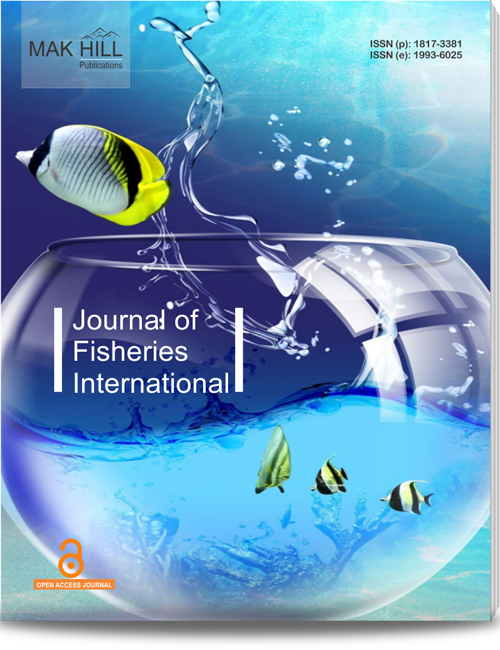
Journal of Fisheries International
ISSN: Online 1993-6025ISSN: Print 1817-3381
Abstract
The Oubeira Lake constitutes a vast extent of fresh water (5436 acre) of a maximal depth of 5m. Exploited for the irrigation, the drinking water and the extensive raising of 9 fish of which the silvery eel and the microphage species of Carps. This lake is considered as one of the biggest RAMSAR sites of Algeria (36°50`N, 8°23`E). The composition and the biomass of the phytoplankton have been analyzed monthly in three stations of the Oubeira Lake during a yearly cycle (October 2000-September 2001) in addition to the environmental parameters. The water temperature varied all along the months between 9 and 30 °C, the pH between 6.1 and 7.9, whereas the conductivity remained in the order of 1 mS. Unusually, the year 2001 was very little rainy with only 575 mm. The phytoplankton is formed mainly by the Cyanobacteria, Chlorophycea, Diatoms and in a least measures Euglenophycea. This basic population develops active densities up to 4×105 ind.L 1. The monthly middle biomass is 203 µg CL 1. This stock is made largely of the Cyanobacteria (32.5%) Chlorophyceae (27.1%) Diatoms (24.6%) and the Euglenophyceae (15.6%). The biomass reflects an important fertility and represents a wealth of the Oubeira
How to cite this article:
Z. Branes , M. Ounissi , D. Sargos and C. Amblard . Density and Biomass of Phytoplankton in the Oubeira Lake (North-East Algeria).
DOI: https://doi.org/10.36478/jfish.2007.200.206
URL: https://www.makhillpublications.co/view-article/1817-3381/jfish.2007.200.206